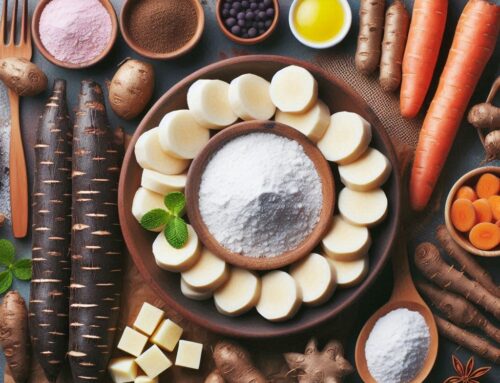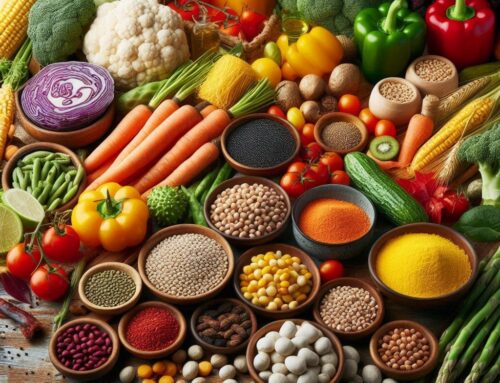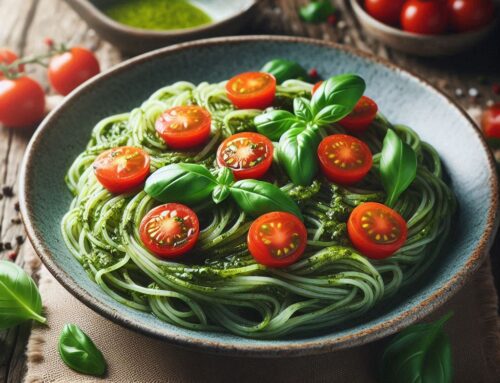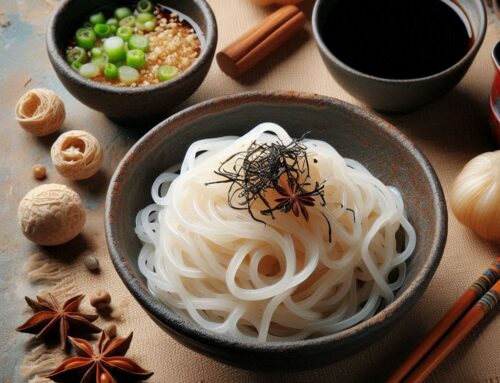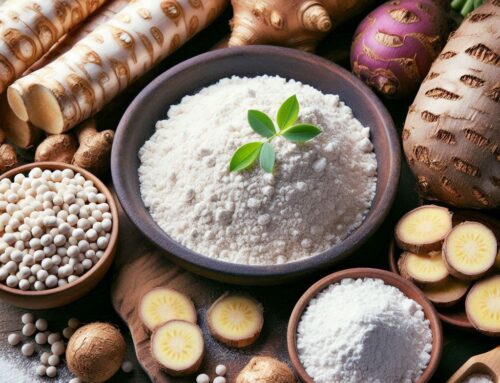
Understanding Konjac Jelly: What is it Made Of?
Konjac jelly is a unique and fascinating food product that has gained popularity due to its health benefits and versatile uses. At the heart of konjac jelly is the konjac plant, scientifically known as Amorphophallus konjac. This plant is native to parts of Asia, particularly Japan and China, where it has been used for centuries in traditional cooking.
The primary ingredient in konjac jelly is konjac gum, which is derived from the root of the konjac plant. Konjac gum acts as a natural thickening agent and gives the jelly its distinctive texture. One of the standout features of konjac gum is its high content of dietary fiber, specifically glucomannan. This water-soluble fiber is renowned for its ability to absorb large amounts of water, forming a gel-like substance that can aid in digestion and promote a feeling of fullness.
In addition to its main ingredient, konjac jelly often contains water, flavorings, sweeteners, and sometimes additional gelling agents to enhance taste and texture. However, it’s the dietary fiber from the konjac plant that makes this jelly particularly appealing for those seeking low-calorie snacks or looking to support digestive health.
Understanding these ingredients helps consumers appreciate why konjac jelly has become such a popular choice for health-conscious individuals around the world. Whether enjoyed on its own or incorporated into various dishes, this intriguing product offers both culinary versatility and nutritional benefits.
Nutritional Benefits of Konjac Jelly for Children
Konjac jelly is gaining popularity as a nutritious snack option for children, and for good reason. Known for its unique texture and pleasant taste, konjac jelly offers several health benefits that make it an excellent addition to a child’s diet. One of the primary nutritional advantages of konjac jelly is its high fiber content. Fiber is essential for maintaining healthy digestion, and incorporating konjac jelly into your child’s diet can help promote regular bowel movements and prevent constipation.
Additionally, konjac jelly serves as a low-calorie snack, making it an ideal choice for parents who are mindful of their children’s calorie intake. Unlike many sugary snacks that contribute to unhealthy weight gain, konjac jelly provides a satisfying treat without the added calories. This makes it easier to manage your child’s overall caloric consumption while still allowing them to enjoy tasty snacks.
The health benefits of konjac extend beyond just fiber intake. Konjac is also known to support metabolic health by helping regulate blood sugar levels, which can be particularly beneficial in preventing childhood obesity and related metabolic disorders. By including konjac jelly in your child’s diet, you can ensure they receive these nutritional benefits while enjoying a delicious snack that’s both fun and healthy.
The Safety Concerns Around Konjac Jelly Consumption by Kids
Konjac jelly has gained popularity as a chewy, low-calorie snack, but it comes with significant safety concerns, particularly for children. The primary issue is the potential choking hazard that konjac jelly poses due to its gelatinous texture and slipperiness. Unlike other jellies that dissolve easily in the mouth, konjac jelly maintains its form, making it difficult for young children to chew and swallow safely.
To mitigate these risks, it’s crucial to adopt safe consumption practices when serving konjac jelly to kids. First and foremost, ensure that the jelly is cut into small, manageable pieces that reduce the risk of choking. It’s also advisable to supervise children closely while they eat this snack. Encouraging them to take small bites and chew thoroughly can further enhance safety.
Food safety for children should always be a priority, and understanding the specific risks associated with certain foods like konjac jelly can help prevent accidents. By maintaining vigilant supervision while eating and adhering to recommended consumption practices, parents can better protect their children from potential hazards associated with this popular treat.
Comparing Konjac Jelly to Other Children’s Snacks
When it comes to choosing healthy snacks for kids, parents often find themselves navigating a sea of options. Among these, konjac jelly has emerged as a popular choice due to its unique texture and low-calorie content. However, how does it stack up against other children’s snacks in terms of nutrition?
Konjac jelly is primarily made from the konjac plant’s root, which is rich in glucomannan—a dietary fiber known for promoting satiety with minimal calories. This makes it an appealing option for parents looking to manage their child’s calorie intake without sacrificing satisfaction. However, it’s important to consider alternative snacks that also offer nutritional benefits.
Fruits such as apples or bananas are excellent alternatives to konjac jelly. They provide natural sugars and essential vitamins like vitamin C and potassium, contributing to overall health and energy levels. Similarly, yogurt offers probiotics along with calcium and protein, supporting digestive health and bone development.
When conducting a nutritional comparison of children’s snacks, it’s crucial to look at the overall nutrient profile rather than focusing solely on calorie content. While konjac jelly can be part of a balanced diet due to its fiber content and low caloric value, incorporating a variety of foods ensures that children receive a comprehensive range of nutrients necessary for growth.
In conclusion, while konjac jelly presents itself as an intriguing snack option due to its unique properties and potential health benefits, integrating a variety of healthy snacks like fruits and yogurt can provide children with the diverse nutrients they need for optimal development.
Tips for Introducing Konjac Jelly to Your Child’s Diet Safely
Introducing new foods to your child’s diet can be both exciting and challenging. When it comes to konjac jelly, a popular snack known for its chewy texture and low-calorie content, it’s important to ensure a safe and enjoyable experience for your little one. Here are some tips for introducing konjac jelly safely:
- Gradual Introduction: Start by offering small portions of konjac jelly alongside familiar foods. This gradual approach helps your child get used to the new texture and taste without overwhelming them. It’s also a great way to observe how they react to the new addition.
- Monitor Reactions: As with any new food, it’s crucial to keep an eye on how your child responds after trying konjac jelly. Watch for any signs of allergies or digestive discomfort, such as rashes or stomach upset. If you notice any adverse reactions, discontinue use and consult with a healthcare professional.
- Educate About Safe Consumption: Konjac jelly has a unique texture that can pose a choking hazard if not consumed properly. Teach your child the importance of chewing thoroughly before swallowing, and supervise them during snack time until you’re confident they can handle it safely on their own.
- Incorporate into Balanced Meals: To ensure nutritional balance, integrate konjac jelly into meals that include other healthy options like fruits, vegetables, proteins, and whole grains. This not only enhances the nutritional value but also diversifies your child’s palate.
By following these tips on introducing new foods to kids safely, you can make the process enjoyable while ensuring their well-being as they explore different tastes and textures in their diet.
The Verdict: Should You Include Konjac Jelly in Your Child’s Diet?
Konjac jelly has become a popular snack among health enthusiasts, but when it comes to children, parents often wonder if it’s a suitable addition to their diet. So, should kids eat konjac jelly? To answer this question, it’s essential to understand what konjac is and its potential benefits and drawbacks for children.
Konjac is a plant that produces a starchy root called glucomannan, which is used to make konjac jelly. This jelly is low in calories and high in fiber, which can be beneficial for digestion. However, when considering whether konjac is good for children, there are several factors to weigh.
Firstly, the high fiber content can aid in maintaining healthy digestion and preventing constipation in kids. But it’s crucial to ensure that your child drinks plenty of water alongside consuming high-fiber foods like konjac jelly to avoid any digestive discomfort.
On the downside, some concerns have been raised about the potential choking hazard posed by certain types of konjac products due to their gelatinous texture. It’s vital for parents to supervise young children while eating these snacks or opt for safer alternatives designed specifically for kids.
Balancing diet with healthy options involves incorporating various nutrient-rich foods into your child’s meals. While konjac jelly can be part of this balance due to its low-calorie nature and fiber content, it should not replace other nutritious foods that provide essential vitamins and minerals necessary for growth and development.
In conclusion, while there are benefits associated with including konjac jelly in your child’s diet as part of a balanced approach with other healthy options, careful consideration should be given regarding safety and nutritional needs. Always consult with a pediatrician or nutritionist before introducing new food items into your child’s meal plan.


